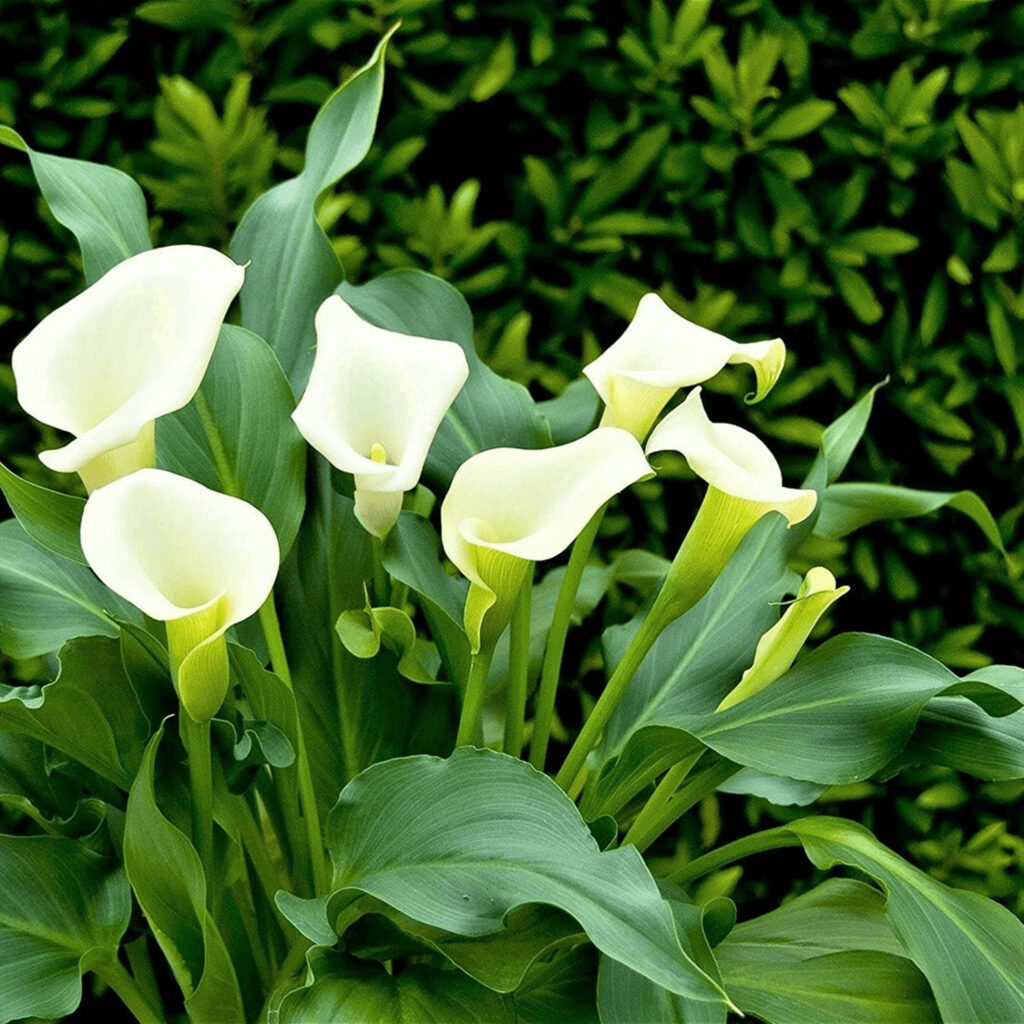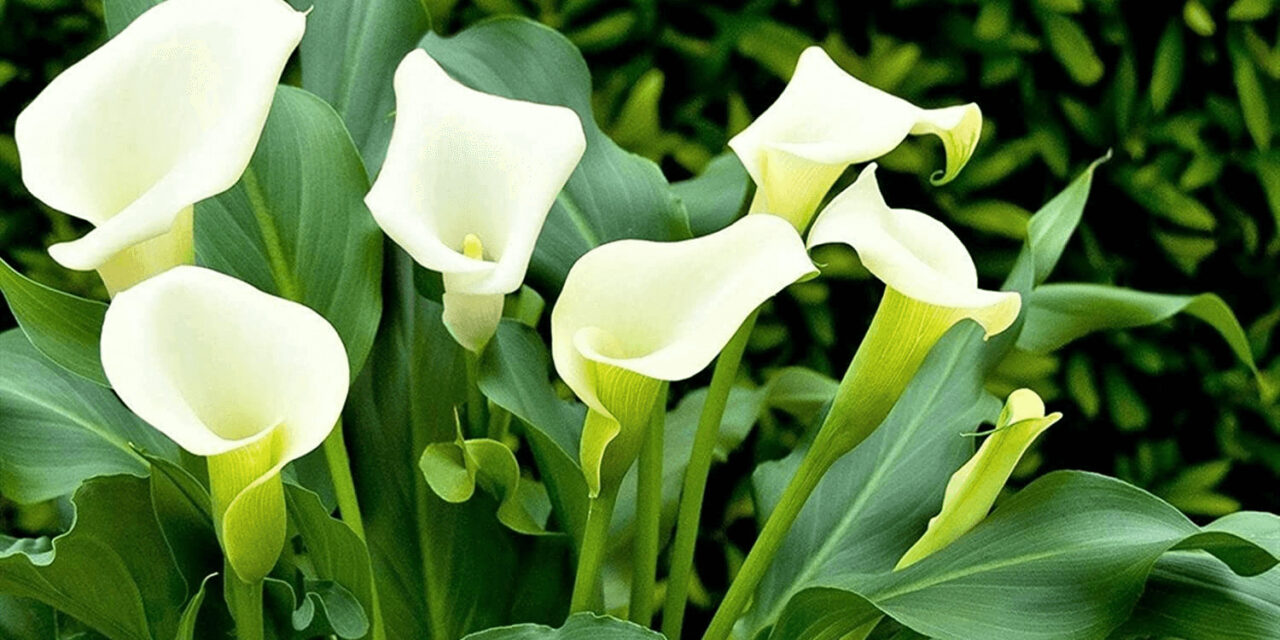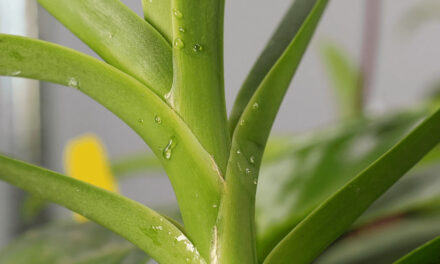Calla lilies (Zantedeschia) are exquisite and elegant flowers known for their stunning trumpet-shaped blooms. Native to southern Africa, these beauties have gained popularity worldwide due to their vibrant colors and graceful appearance. Whether you're a seasoned gardener or a beginner, calla lilies can be a delightful addition to your indoor or outdoor garden. In this comprehensive guide, we will walk you through everything you need to know about caring for calla lilies and help you ensure their long-lasting beauty.

Caring for Calla Lilies
Calla lilies thrive in areas with bright, indirect sunlight. When selecting a spot for your lilies, choose a location that receives partial shade during the hottest part of the day. If you plan to grow them indoors, place them near a window that gets a good amount of sunlight. Calla lilies prefer moist, well-draining soil. Before planting, prepare the soil by adding organic matter, such as compost or well-rotted manure, to improve its fertility and drainage. Aim for a slightly acidic to neutral pH level between 6.0 and 7.0.
Planting Calla Lilies
Plant your calla lily bulbs or rhizomes in early spring, after the danger of frost has passed. Dig a hole that is approximately 4-6 inches deep and place the bulb or rhizome with the pointed end facing up. Space multiple bulbs at least 12 inches apart to allow for adequate airflow and prevent overcrowding. Calla lilies require consistent moisture to thrive. Keep the soil evenly moist but not waterlogged. During the growing season, water your calla lilies regularly, especially during dry spells. However, be cautious not to overwater, as it can lead to root rot. Reduce watering during the dormant period.
Fertilizing and Pruning
To promote healthy growth and abundant blooms, feed your calla lilies with a balanced, water-soluble fertilizer every two to three weeks during the growing season. Look for a fertilizer specifically formulated for flowering plants and follow the instructions on the package carefully. Avoid over-fertilization, as it can cause excessive foliage growth at the expense of flowers. Pruning calla lilies is essential for maintaining their shape and overall health. Remove any yellowing or dead leaves by gently pulling them off at the base. After the blooming period, you can cut back the entire plant to encourage new growth and future blooms. Deadheading spent flowers will also help divert energy into producing more blooms.
How to Care for Calla Lilies in the Winter Months
Calla lilies are not frost-hardy plants and cannot tolerate freezing temperatures. In regions with cold winters, dig up the bulbs or rhizomes before the first frost, allow them to dry for a few days, and store them in a cool, dry place for the winter. Replant them in spring after the last frost has passed.
Pests and Diseases
Calla lilies are generally resistant to pests and diseases. However, they can occasionally face challenges such as aphids, snails, or root rot. Monitor your plants regularly and take prompt action if you notice any signs of infestation or disease. Use organic insecticides or remedies like neem oil to control pests, and ensure proper soil drainage to prevent root rot.
Propagation
You can expand your calla lily collection by propagating them. Divide the rhizomes in early spring, making sure each section has at least one healthy shoot and a portion of the rhizome. Plant them in separate locations or containers following the same planting guidelines mentioned earlier.
Caring for calla lilies can be a rewarding experience, as these elegant flowers add a touch of sophistication and beauty to any garden or indoor space. By following the tips and tricks outlined in this guide, you can ensure that your calla lilies thrive and produce stunning blooms year after year. Remember to choose the right location with partial shade and well-draining soil, provide consistent moisture without overwatering, and fertilize regularly during the growing season. Proper pruning and deadheading will help maintain the plant's shape and encourage continuous blooming.
During the winter months, take the necessary precautions to protect your calla lilies from frost damage by digging up and storing the bulbs or rhizomes in a cool, dry place. This will ensure their survival and allow you to enjoy their beauty in the following spring. Keep a watchful eye for pests and diseases, as early detection and intervention can prevent any major issues. Regular inspections, organic remedies, and proper drainage will go a long way in keeping your calla lilies healthy.
Lastly, don't hesitate to experiment with propagation to expand your collection. Dividing the rhizomes in early spring will allow you to create new plants and share the joy of calla lilies with others. By dedicating time and attention to caring for your calla lilies, you'll be rewarded with their stunning blooms, creating a captivating and vibrant atmosphere in your garden or home.
So, whether you're an experienced gardener or just starting your green thumb journey, cultivating calla lilies can be a delightful and fulfilling endeavor. With proper care and a little patience, you'll be able to enjoy the beauty of these graceful flowers throughout the seasons.



















